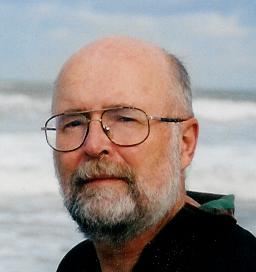 [I said y'day I would talk about chemistry, but I can see I hadn't given enough atttention to the fourth force. Also, it is important to understand something of how atoms are built up in order, not only to understand their chemistry, but how their physics and chemistry are seemingly inevitable in the way the Universe unfolds from the singularity which became what we know as the Big Bang]
[I said y'day I would talk about chemistry, but I can see I hadn't given enough atttention to the fourth force. Also, it is important to understand something of how atoms are built up in order, not only to understand their chemistry, but how their physics and chemistry are seemingly inevitable in the way the Universe unfolds from the singularity which became what we know as the Big Bang]It takes an awful lot of energy to get atom kernels to meld, or fuse together. But, when they do fuse, they release a lot of energy (which can get other kernels to fuse.)
Those of you in the back row paying attention, may well ask, well why doesn't it all fuse together into a giant atom? Well, for one thing the larger, heavy nuclear cores are unstable and the weak interaction tends to "unglue" the bonds holding them together. Also, the amount of energy needed to get atoms to fuse in the first place, increases the larger they are.
The break-even point, happens to be with one of the isotopes of iron. It takes more energy to create elements heavier than iron than they release in their fusion*.
Thus, in a sense, iron is the most physical stuff we know of on earth.
(A coincidence, of course, is that iron is deadly to the fairy folk in most folk legend. Also, iron the symbol of worldly power in most traditions. Thor's Hammer was made of iron. Thor, by the way is the son of Jord -- that is, Earth. His father was Odin, All-Father of the nine worlds.)
It boggles the imagination to know, with certainty, that a sufficiently large amount of apparently chaotic energy MUST coalesce into plasma, then quarks, mesons, bosons and what-not. This inevitable fall-out of the plasma, MUST stick together to become atomic nuclei and these, in turn, MUST become the more complicated atomic kernels -- neutrons and protons held together and ruled by the forces of strong and weak interactions mentioned before.
Lithium, Barium Fluorine, Oxygen, Carbon -- all the elements and their isotopes -- they MUST be formed as a result of the Big Bang as surely as if a jillion angels had knitted them together in some sort of divine Chinese sweatshop,
However, this inevitability would not be obvious to a casual observer until some many billions of years later, when living, consciously aware beings appear in this Universe, beings which can look at the world around them and realise that the prerequisite for their being was the out-folding of the Universe after the "Big Bang".
Was the Big Bang, in fact a "big bang"? Whatever, the reason we call it a Big Bang because we have to call it something.
The point is that Something Happened and the result was what we call the Big Bang and the inevitable result of that was an out-folding of galaxies, stars, suns and planets, all the elements we know of and, finally, life and beings such as ourselves which are, occasionally consciously aware.
When the first stars took form, they were made up of almost nothing but hydrogen with a pinch of helium. After the minor and major cataclysms of novas and supernovas, hypernovas and quasars, some of the hydrogen was transmuted into heavier elements. Even so, the stuff of the Universe today is roughly estimated to be ninety percent hydrogen and seven percent helium.
But this three percent, this stardust, these ashes of eternity -- they are the lion's share of what makes our Earth and any planets like Her. They are the key to the fact that life could and did appear and evolve -- without them, the Earth could never have become our Blue Mother.
(By the way, if she did not frequently keep herself and her children chastely covered with the gentle shawl of her soft white clouds -- life would long ago have disappeared, frozen at night, scorched to death by day.)
When the elements cool down enough to what we, as living creatures think of as "good" temperatures, they begin to interact with one another in a number of very interesting ways -- ways which are obvious and inevitable once you know how and why they interact in these ways -- they form chemical bonds.
What are chemical "bonds"? Just to even begin to really answer that question would require book loads of footnotes!
First of all, though, we have to backtrack a bit and ask: what is an "atom"?
The first atomic theory was proposed by a Greek philosopher about two and half thousand years ago. He postulated that if you cut a piece of, say, iron in half -- both pieces have all the qualities and nature of iron. He intuited that at some point in dividing the iron into smaller and smaller pieces, you would have something that was iron that could not be further divided.
The truth of his intuition was that, from a certain view at least, the Universe is discrete. However, he was wrong on several counts, mostly because the Universe, seen from a different viewpoint is continuous.
This means that a single atom of the element "Fe" is not what we know as "iron". There has to be a quantity of these atoms before we can recognise the qualities of iron -- it's malleability, ability to be magnetised, melting point and so on.
The problem is: we can't quantify how many atoms make a bit of iron -- we can't say that twenty million Fe atoms is "iron" and twenty million minus one atom is "not iron".
The second point where the old Greek was off the mark was his assumption that an atom cannot be divided into something smaller. The fact is, that it can -- and these particles can also be broken into things even more exotic.
What Einstein noted in the intuition he concretised in mathematics (and which has since been verified in a number of practical ways) is that matter and energy are different states of the same thing -- analogous to the way ice, water and water vapour are different states of the same substance -- H2O.
Although I had intended to talk about chemistry, in particular that of Water and Carbon, I realise now that that to backtrack a bit. The way atoms bond and interact chemically has a lot to do with the core of the atom, its nucleus.
Earlier, I said that protons (the core of a Hydrogen atom) can, under sufficient encouragement "meld" and that what makes this possible is the fourth force, the strong interaction or nuclear glue. I didn't mention that there have to be neutrons for it to work. Neutrons are the same as protons, except that they have no electric charge, they are electrically neutral -- therefore the name.
Usually, there are at least as many neutrons as protons. The only atom which does not "need" a neutron is the single proton -- Hydrogen. However, it can be glued to one or even two neutrons. Such are called isotopes. All elements have isotopes and their chemistry is the same -- almost, but not quite!
The dominant isotope of Helium consists of two protons and two neutrons. There is a naturally occurring, but rare isotope with only one neutron -- all other isotopes are exotic, extremely unstable and, in our world, artificially made.
An atom, as you surely know consists of more than a nucleus of protons and neutrons -- there are also electrons. The electron is a rather odd critter, little more than a negative charge with (almost) no mass. The picture Bohr gave of electrons which rotate around the nucleus like planets around a sun is a rather poor analogy -- which he well knew. Actually, the electron is more like a cloud of probability. Furthermore, the electrons must be at certain, discrete distances from the nucleus. Since the position of an electron is a probability cloud, the place where an electron can be is called a "shell".
Each "shell" can only have a certain number of electrons in it. The first shell can only have two, the second eight. It quite quickly gets very complicated. For example, only these first shells can be thought of as spherical. The point to understand here is that there is atoms "want" to have a complete shell. This is accomplished by either "borrowing" or "lending" electron(s) to an atom of a different element.
Generally speaking, elements which have only one electron in the outermost shell or lack but one for completion are the most chemically active. The most common example we see in daily life is Sodium and Chlorine -- which, as soon as they are together as elements form common table salt, NaCl.
Elements where the outer shell is complete have no "need" and therefore are almost completely chemically inert -- Helium is the first of this sort.
This far from explains chemistry, but I hope it makes clear not only why the chemistry of the elements changes as the size of the atomic nucleus gets larger, but also why their chemistry is cyclical, i.e., Helium, Neon, Argon Krypton and Radon all resemble one another in that they are chemically inert.
In regards to life, the most important are, Hydrogen, Oxygen and Carbon.
Hydrogen and Oxygen are important because they form water.
Carbon is important because, as the sixth element, it has an outer shell which is either half full or half empty, depending on how you look at it. What this means is that Carbon can bond chemically in all kinds of ways with any number of other elements, in particular, with Hydrogen and Oxygen, but also Nitrogen, Sulphur and Potassium, just to name a few of the most important.
In fact, chemistry is divided into to categories, inorganic and organic. Roughly speaking, organic chemistry is any compound containing Carbon. Inorganic is all the rest.
Inorganic chemistry deals with less than two hundred thousand compounds.
Organic chemistry deals with several millions -- and the reason is that outer shell which is neither/or -- I said Carbon can combine with a lot of elements, but, most important of all, it can combine with itself!
And that is the secret of life -- in Carbon chemistry we hit the jackpot.
If the chemistry of Carbon was not like it is there could be no life, period. But the chemistry of Carbon is like it is and the reason for that is that the elements form in the out-folding of the manifest Universe with all the certain inevitability that an avalanche falls down a mountainside and not up, that a seed sends its roots down into the soil and its first leaves up towards the light.
Carbon can be Carbon, but without water, H2O, it would matter little. There is something very strange and wonderful about the chemistry of water.
I hope to write a bit about Water tomorrow.
_________________
* I'm not completely sure about this with Iron, but I'm pretty sure it is correct




No comments:
Post a Comment